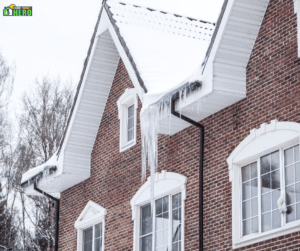
Winter brings cozy nights by the fire, warm cups of cocoa, and unfortunately, higher energy bills. Many homeowners don’t realize that “silent energy wasters” could be driving those costs even higher. These hidden culprits—like drafty doors, chimney leaks, and inefficient HVAC systems—quietly sap energy, making your home less comfortable and your heating system work overtime. In this post, Silent Energy Wasters in Winter and How to Stop Them, we’ll uncover the most common energy drainers and share practical tips to help you seal the leaks, optimize your systems, and keep your home snug while saving on energy costs.
The Hidden Culprits of Energy Waste in Winter
In winter, there are several hidden culprits of energy waste that can make your home colder and more expensive to heat. Drafty doors and windows occur when the seals or weather stripping are worn out, allowing cold air in and warm air out, which forces your heating system to work harder. Unused chimneys can also siphon heat from your home, especially if they have damaged dampers or poor sealing. Inefficient HVAC systems are another common problem, causing inconsistent heating and high energy bills due to clogged filters, outdated systems, or lack of maintenance. Additionally, phantom power drain happens when devices are left plugged in, using energy even when they’re not in use. Identifying and addressing these issues can help you save energy and keep your home comfortable this winter.
How to Identify Silent Energy Wasters
Here is the simple way to identify silent energy wasters in winter and how to stop them. Start by conducting a home energy audit. A professional audit can provide a detailed assessment, while implementing methods like using thermal cameras or draft testers to help spot inefficiencies. Checking for drafts is also key—simply use a candle or incense near doors and windows to detect air leaks. Don’t forget to inspect your chimney and vents, looking for gaps or cold drafts near fireplaces and air ducts. Finally, evaluate your HVAC system by paying attention to its performance and maintenance history, ensuring it’s running efficiently and not wasting energy.
Actionable Solutions to Stop Energy Waste
Start with sealing drafty doors and windows using weather stripping, caulk, or draft stoppers. For ultimate efficiency and a more permanent fix, upgrade to energy-efficient windows. For chimney leaks, install a chimney balloon or make sure the damper is closed when not in use, and schedule professional inspections for proper sealing. Improve your HVAC efficiency by regularly cleaning or replacing air filters, and consider upgrading to a programmable thermostat or an energy-efficient system. To address phantom power, use smart plugs or power strips to cut power to devices that are idle.
Long-Term Strategies for Winter Energy Efficiency
Long-term strategies for winter energy efficiency begin with upgrading your home insulation. Insulation helps retain heat, reducing the need for constant heating and improving indoor comfort. Incorporating smart technology, like smart thermostats and energy monitoring systems, allows you to manage your energy use more effectively and save on heating costs. Regular seasonal maintenance, such as annual HVAC checkups and chimney inspections, is also essential to ensure everything is running smoothly. By implementing these strategies, you can reduce the impact of silent energy wasters in winter and how to stop them.
Conclusion
Addressing silent energy wasters is key to keeping your home warm, comfortable, and energy-efficient during the winter months. By tackling issues like drafty doors, chimney leaks, and inefficient HVAC systems, you can save on energy costs and reduce strain on your heating system. Start identifying and fixing these issues today to enjoy a more cost-effective winter. For additional tips and expert help, explore our energy audit services and winter energy-saving resources.
If you’re ready to schedule a home energy audit, please contact us.
